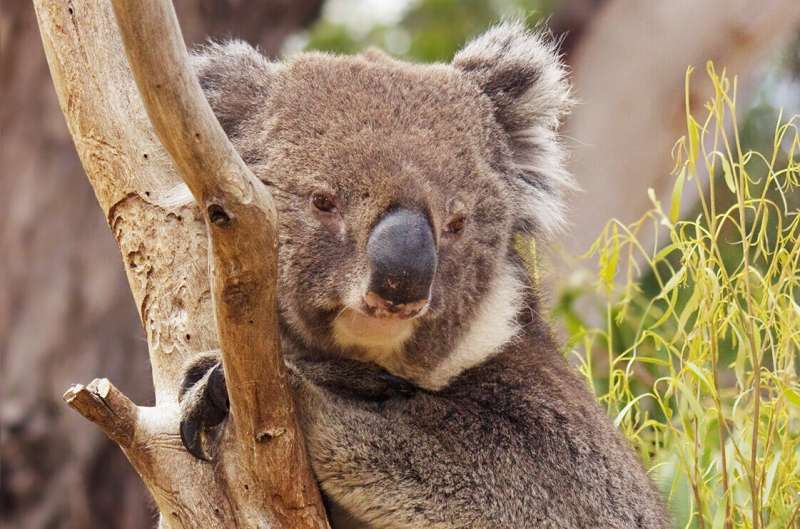September 16, 2023 report
This article has been reviewed according to Science X's editorial process and policies. Editors have highlighted the following attributes while ensuring the content's credibility:
fact-checked
trusted source
proofread
Saturday Citations: Wear a helmet around supermassive black holes. Also, cute koalas and quantum therapy for cancer

This week, we looked at the swirling chaos around supermassive black holes, anthropogenic climate effects over the Atlantic ocean and the threats to koalas.
Prediction shaky
Researchers based in the United States and the Netherlands report that they can predict the motion of 27 stars chaotically orbiting Sagittarius A*, the black hole at the center of the Milky Way, over only 462 years before prediction confidence plummets, an "astonishingly short" period. Via a computer program they developed in 2018, it is possible to predict with confidence the movements of solar system objects for 12 million years.
The reasons for the shorter horizon at Sag A* include the fact that the area around the black hole is populated with stellar-mass objects rather than the relatively light and portable planetary bodies of the solar system. But the system around Sag A* is also "30,000 times more chaotic," according to the researchers, because when two or three stars approach each other closely, their mutual gravitational shoving leads to variations in their orbits, which also push on the black hole, thereby affecting all 27 stars in the cluster.
It's a hardcore stellar mosh pit, by contrast with the solar system's Jane Austen-like cotillion of stately English country dancing.
Emissions disadvantageous
At this point, it's basically assumed by everyone that changes in climate and weather patterns are human induced. But scientists at the University Miami Rosenstiel School of Marine, Atmospheric, and Earth Science recently drove the point home (again) with a grand ensemble simulation technique that combined the averages of 400 worldwide climate model simulations to demonstrate that climate change is a result of external forcing by two primary antagonists: (1) humans and (2) volcanoes.
Based on the results of the simulation, the researchers suggest that in the years after World War II, human aerosol emissions suppressed hurricane activity in the Atlantic and produced a drier Sahel desert in West Africa. Aerosol emission decreases in the 1980s correspond with heightened hurricane activity and more rainfall in the Sahel.
Chengfei He, a postdoctoral researcher at the Rosenstiel School, said, "Due to the continuous reduction in human-induced aerosol emissions around the Atlantic, along with ongoing and future warming due to greenhouse gases, we suggest there will not likely be a return to the quiet period in hurricane activity in the Atlantic in the decades of the mid-century."
Therapeutic desirable
The prognosis for glioblastoma, an aggressive form of brain cancer, is exceedingly grim. The five-year survival rate currently stands at 6.8%. Multidisciplinary researchers at the University of Nottingham in the U.K. now report an approach—still years from human trial—that represents the first quantum therapeutic for glioblastoma.
They developed what they're calling bio-nanoantennae, gold nanoparticles functionalized with electron acceptor-donor species. Remote electrical stimulation regulated electron transport between the acceptor-donor species selectively; in experiments in vitro, modulating the electron transport triggered apoptosis (cell death) in glioblastoma cells, leaving healthy cells unharmed.
Marsupial imperiled
Koalas, easily ranking in the top three most charismatic animals on the planet, tend to receive more public attention and research than less invitingly huggable threatened species, such as the Chinese sturgeon. Just look at this poor guy. Yeah, yeah, I know we should focus more attention on key species that were not gifted with a resemblance to human babies, but I'm not made of stone, people, here's a story about koala bears and their troubles.
Researchers at the University of Queensland School of Veterinary Science analyzed KoalaBASE data to determine the most frequent causes of koala death in southeast Queensland, Australia: cars (52%), chlamydia (34%) and dog attacks (14%). The study spanned a five-year period from 2009 to 2014. The researchers hope their findings can help policymakers to create interventions to reduce koala deaths so we can focus more attention on less adorable endangered species.
© 2023 Science X Network





















